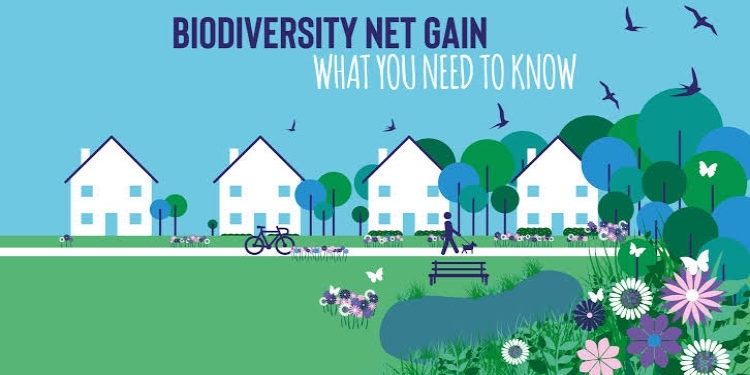The biodiversity net gain metric has emerged as a critical tool in environmental conservation and sustainable development. It provides a quantifiable measure of the effect that construction initiatives and land-use changes have on local ecosystems. This progressive technique aims to make certain that development sports result in a net fantastic impact on biodiversity, rather than simply minimizing harm.
Understanding and imposing the biodiversity net gain metric has turn out to be vital for city planners, developers and policymakers. It offers a framework to evaluate, mitigate and beautify biodiversity in improvement tasks. This text explores the idea of biodiversity net gain, its application in making plans methods and methods to measure and display biodiversity improvements. By means of delving into those components, readers will benefit insights into how this metric can result in extra sustainable and ecologically accountable improvement practices.
Understanding the Biodiversity net gain Metric
Definition and cause
The biodiversity net gain metric is a unit of dimension used to quantify the ecological cost of development sites. It has emerged as a crucial part of most development initiatives, reworking the manner planners method initiatives with a focal point on maintaining and enhancing the natural environment. This technique pursuits to leave biodiversity in a measurably higher state than earlier than improvement came about, developing new habitats and improving present ones.
Key components
The metric considers numerous key factors:
1.Habitat size: the scale of the habitat region
2.Habitat condition: The modern fitness and nice of the habitat
3.Habitat distinctiveness: The rarity or specialty of the habitat
4.Strategic importance: The habitat’s contribution to neighborhood, local, or countrywide biodiversity targets
Calculation methodology
The statutory biodiversity metric calculation device is used to decide an accurate rating based on ecological features. It analyzes the biodiversity unit value of a specific plot of land, gages possibly effects on biodiversity and identifies profits and losses. The tool compares the habitat determined on a domain earlier than and after improvement, taking into consideration elements including habitat size, circumstance, distinctiveness and place. This calculation enables in assessing baseline biodiversity, evaluating improvement effect and making plans improvements to attain the mandated 10% net gain.
Enforcing BNG in Planning Process
Integrating BNG into improvement Plans
Developers should verify whether their mission is exempt from BNG while applying for making plans permission. If now not exempt, they need to provide information on assembly the BNG objective, including proposed on-web site upgrades. A biodiversity advantage plan, supported by means of a metric device calculation, need to be submitted to the nearby making plans Authority (LPA) for approval earlier than improvement can begin. This plan has to exhibit how the mandatory 10% internet advantage will be completed.
Demanding situations and answers
The number one venture is finding area for a 10% gain, especially on restricted websites. Off-site habitat advent is an alternative, but its value decreases with distance from the authentic website. To cope with this, developers can explore revolutionary solutions like growing microclimates in small areas or maximizing existing regions susceptible to flooding. training institutions can introduce meadows and wildflower areas, serving both biodiversity dreams and fingers-on mastering possibilities.
Nice Practices for developers
To successfully put in force BNG, developers have to:
1.Prepare early for legal requirements
2.Suppose beyond making plans, linking BNG to weather and ecological emergencies
3.Collaborate with neighboring authorities and nearby communities
4.Make certain long-term management and protection of enhanced habitats
5.Recall growing habitat banks for off-site BNG delivery
Measuring and tracking Biodiversity profits
Tools and technologies
The biodiversity net gain metric utilizes diverse tools to quantify ecological cost. Those include Biodiversity Impact Assessment (BIA), which comprehensively take a look at capacity development impacts. Biodiversity metrics, such as the Biodiversity Metric 2.0, are employed to measure biodiversity gadgets. Habitat and species surveys perceive current ecosystems, while Geographic Information Systems (GIS) map and analyze biodiversity distribution. These tools help examine biodiversity unit values, gage affects, and become aware of gains and losses.
Lengthy-term management strategies
Successful lengthy-time period management of biodiversity gains involves numerous key techniques. Habitat advent and enhancement consciousness on rewilding, planting native species and restoring degraded ecosystems. Biodiversity offsetting permits developers to spend money on conservation efforts elsewhere. Ecological restoration initiatives purpose to restore degraded ecosystems, while sustainable land management practices minimize biodiversity loss. Adaptive management is crucial, making an allowance for updates to management plans based on monitoring consequences over the 30-yr dedication period.
Case research and achievement tales
Numerous initiatives show a hit biodiversity net gain implementation. Gatwick Airport stronger its biodiversity, while the Medmerry scheme utilized environment offerings valuation. The development of 2500 houses east of Aylesbury and the A338 street upkeep mission in Bournemouth integrated BNG concepts. Other amazing examples consist of the redevelopment at St Leonards health center in Dorset, quarry extension at Gill Mill in Oxfordshire, and the introduction of Priest Hill Nature Reserve in Surrey. Those instances highlight the realistic utility of BNG throughout various sectors and scales.
Conclusion
The biodiversity net gain metric has a vast effect on environmental conservation and sustainable development practices. It offers a framework to quantify ecological cost, verify development affects and plan upgrades to attain a wonderful impact on biodiversity. Via integrating this technique into making plans methods, developers and policymakers could make extra informed choices to hold and improve local ecosystems. This metric is inflicting a revolution in city planning, encouraging revolutionary solutions and long-term management techniques to defend and beautify biodiversity.
To wrap up, a success implementation of the biodiversity net gain metric is predicated on early preparation, collaboration and the use of various tools and technologies. Case research from distinctive sectors show the practical software of this method, highlighting its potential to create greater sustainable and ecologically responsible improvement practices. As the biodiversity net gain metric becomes extra extensively adopted, it has the ability to significantly enhance the balance among development needs and environmental conservation, leading to an extra harmonious coexistence among human activities and natural ecosystems.













































































